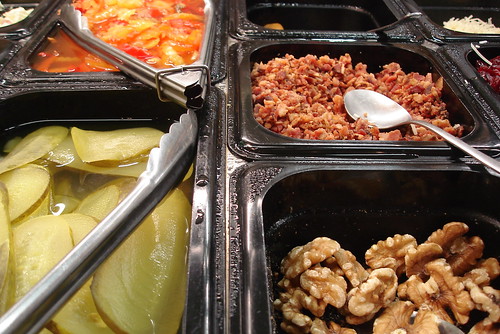Earlier this week, the internet seemed to explode with news of an act of "food terrorism" that occurred in Pennsylvania. Pizza shop owner Nikolas Galiatsatos allegedly attempted to sabotage two rival pizza shops by inserting bags of mice into the ceiling tiles of their bathrooms. In one restaurant, the owners became suspicious and alerted the police, who tracked Galiatsatos down. His business had been suffering and his home life was crumbling at the time of the attack. Though the term has been thrown around rather loosely, tampering with food has caused real harm in history. Here are some examples of real "food terrorism":
1) Ground Beef (2003): An angry man in Michigan attempted to get his supervisor into trouble by mixing insecticide into 1,700 pounds of ground beef. Ultimately, 111 people were sickened by his decisions. The employee, Randy Jay Bertram, received a 9-year prison sentence and paid $12,000 in restitution. Thankfully, no one suffered long-term health problems from the attacks.
2) Various Foods (2010): The work of a few "idiots" in Calgary, Canada turned into a major food-tampering incident. More than 10 incidents have occurred to date. Foods affected include smoothies, ground beef, oranges, baked goods and other things. One woman found metal shards at the bottom of a smoothie she was feeding to her daughter, and another woman found push pins in ground beef. Police tried to discourage copycats after the attacks.

3) Baby Food (1986): In 1986, more than 140 reports arrived at the FDA, alleging that glass and other foreign objects turned up in Gerber baby food. The end of the investigation located 21 separate incidents of tampering, but determined they were isolated cases. The company's reputation endures, despite the troubles.

4) Salad Bars (2010): Credible intelligence information suggested that terrorists were planning another attack on salad bars in major resorts and hotels throughout the United States. The attacks could involve al Qaeda-supported groups and would likely use ricin and cyanide to conduct the attacks. Officials have been briefed in high risk areas.

5) Oranges (1978): A group called the Arab Revolutionary Army injected Israeli oranges with mercury. The crisis began when four small Dutch children complained about the taste of their fruit following dinner. A nationwide search found 25 oranges that had been tampered with. The incident proved especially costly for Israel— the exportation of oranges constituted a $172 million industry for the country at that time.
Photos courtesy sarae/stevendepolo/Vancouver Bites!















